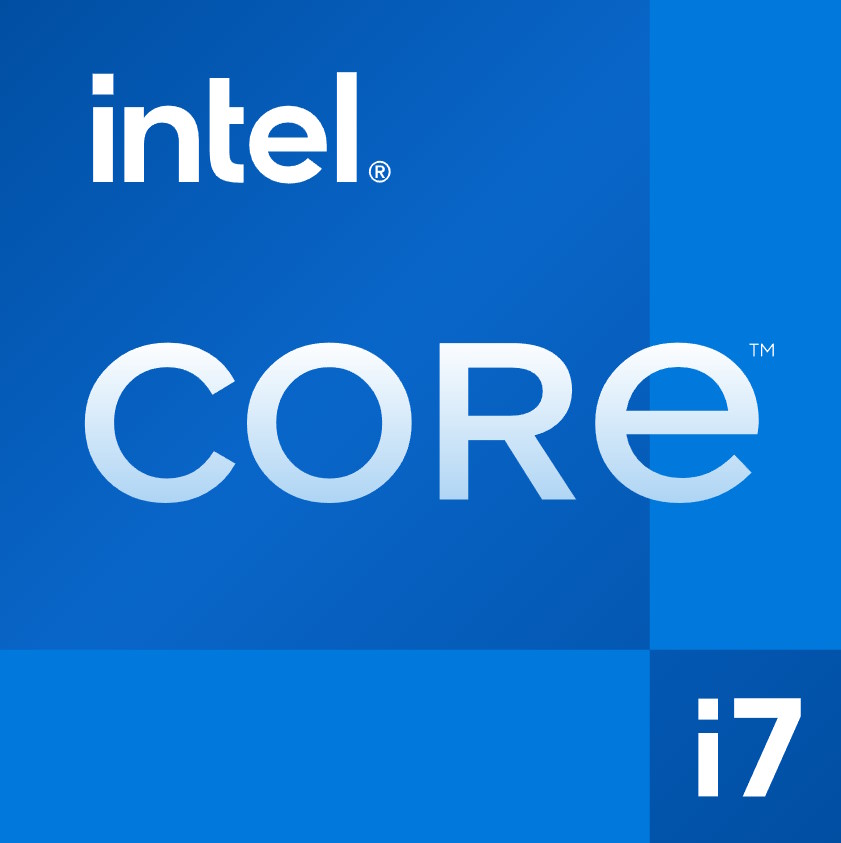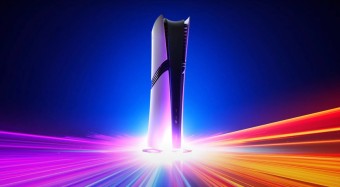Best CPUs for Gaming in 2025
We independently test the products and technologies that we recommend.


| Telemart.ua | 15 299 ₴ | To Store |
| MTA.ua | 12 599 ₴ | To Store |
| Moyo.ua | 14 924 ₴ | To Store |
| FOXTROT.UA | 15 989 ₴ | To Store |
| Openshop.ua | 12 761 ₴ | To Store |
The launch of the new line of Intel Core Ultra processors in 2024 was mixed — on one hand, core performance improved, PCI-E 5.0 support appeared, and neural block capabilities were enhanced, on the other hand, many were confused by the lack of multi-threading and modest performance gains in games. Therefore, a great alternative to the new processors is the time-tested Core i7-14700F.
Core i7-14700F is considered one of Intel's most interesting releases in recent years: 20 cores (8P + 12E), 28 threads, auto-boost up to 5.6 GHz, PCI-E 5.0 support, and compatibility with two types of RAM (DDR4 and DDR5). Moreover, it confirms its potential in gaming tests: paired with a GeForce RTX 4080/5080 level graphics card, the hero of the review lags behind the flagship of the previous generation Core i9-13900K by only 3-6%. At the same time, it heats noticeably less and costs almost 20% cheaper.
Given that this is not the first test of Core i7-14700F, we allow ourselves to repeat: Core i7 chips of the 13th and 14th generations provide performance at the level of Hi-End processors from three years ago and easily fulfill the needs of even the most demanding gamers. The only condition is not to skimp on the cooling system and power supply, as the chip is quite hot and requires considerable energy.

| Telemart.ua | 14 899 ₴ | To Store |
| Shopsmart.com.ua | 13 230 ₴ | To Store |
| Artline.ua | 14 399 ₴ | To Store |
| MTA.ua | 13 999 ₴ | To Store |
| FOXTROT.UA | 14 548 ₴ | To Store |
After extended three-year support for the LGA 1700 platform, Intel announced the long-awaited comprehensive update of its range: new Core Ultra processors replaced the old Intel Core, and the 1700 socket will be replaced by a more modern platform LGA 1851. In the new chips, Intel completely overhauled the neural block, improved energy efficiency, and unfortunately for some experts, abandoned Hyper-Threading support. One of the most interesting processors in the new line is the Core Ultra 7 265KF, which can be conditionally attributed to the mid-level.
Core Ultra 7 265KF is a 20-core chip with the familiar hybrid core architecture from Intel's recent releases. Thus, 8 powerful P-cores Lion Cove operate at a base frequency of 3.9 GHz and can boost up to 5.4 GHz, while 12 economical E-cores operate in the range from 3.3 to 4.6 GHz. The processor supports PCI-E 5.0 interface, can work with DDR5 RAM with a maximum frequency of 6400 MHz, and is equipped with a separate NPU block.
Considering that in gaming tests, the new Core Ultra 7 265KF falls short of its predecessor Intel Core i7-14700F (12–18% depending on the game and settings), this option would look more appropriate in a balanced build for "both gaming and productive work." Thanks to record-breaking single-core performance, Core Ultra 7 265KF should appeal to users whose tasks can't scale well with core count (e.g., music producers). The built-in neural block with a power of 13 TOPS is suitable for working with Copilot and other AI tools outside the cloud. And the new 1851 platform will provide room for maneuver if there is a need to upgrade the system. Overall, it's very much in the spirit of Intel's latest releases.

| Telemart.ua | 15 299 ₴ | To Store |
| Artline.ua | 15 299 ₴ | To Store |
| MTA.ua | 14 099 ₴ | To Store |
| Click.ua | 14 497 ₴ | To Store |
| FOXTROT.UA | 15 327 ₴ | To Store |
At the release of the 9000-series Ryzen, high prices disappointed many experts — despite significant progress in the Zen 5 architecture, new items were often criticized, preferring proven models from the 7000 series. Over the past six months, market forces corrected prices, and now Ryzen 7 9700X is one of the most popular processors available for sale.
By its specs, it's a typical Ryzen 7 series 8-core processor with multithreading support, a maximum clock speed of 5.5 GHz, and 32 MB of L3 cache. Due to a successful architecture update, Ryzen 7 9700X demonstrates solid performance in both single-core and multi-core tasks: in synthetic tests like Cinebench and Geekbench, it achieves almost the same numbers as the 12-core flagship Ryzen 9 9700X from two years ago.
In general, Ryzen 7 9700X shows high competence in almost any field, be it games, software with high multi-threaded load, or tasks requiring the highest clock speeds. The downside is the weak overclocking potential, absence of an NPU block, and rather noticeable heat emission when using PBO (Precision Boost Overdrive) and entering 105 W TDP mode. Many reviews recommend installing full-format water cooling right away, but if you do not intend to push it to the limit, a decent single-tower cooler like Thermalright Peerless Assassin should be enough.

| Telemart.ua | 23 299 ₴ | To Store |
| MTA.ua | 23 699 ₴ | To Store |
| Click.ua | 22 129 ₴ | To Store |
| FOXTROT.UA | 23 408 ₴ | To Store |
| Openshop.ua | 19 235 ₴ | To Store |
Intel Core i9-14900K is the flagship processor of the Raptor Lake Refresh series (14th generation), designed for uncompromising gaming and work systems. It is equipped with 24 physical cores (8P + 16E) and can handle up to 32 threads simultaneously. The maximum frequency of P-cores reaches 6.0 GHz, making the processor a leader in single-thread performance, which is especially important for demanding modern games like the recent S.T.A.L.K.E.R. 2: Heart of Chornobyl and TES IV: Oblivion Remastered.
Like all 14th generation models, it is tuned for the LGA 1700 platform, can work with two types of memory (DDR4-3200 and DDR5-5600), supports PCI-E 5.0, and has an unlocked multiplier. In games, the Core i9-14900K performs excellently, especially at resolutions of 1080p and 1440p, where frame rate and single-thread responsiveness matter. In pure gaming tasks, it competes well with the Ryzen 7800X3D with 3D cache, but thanks to more cores and threads, it performs better in mixed scenarios.
To fully realize the potential of Intel Core i9-14900K, you'll need a reliable motherboard with advanced system logic, a high-quality power supply, and a powerful cooling system. The real-world heat emission of this model can reach 250–300 W. It's also important to remember that Intel loves updating its platforms for the sake of updates; this is the last generation with support for the LGA 1700 socket, and transitioning to a new platform will be required for future upgrades.

| Telemart.ua | 25 299 ₴ | To Store |
| Artline.ua | 24 883 ₴ | To Store |
| MTA.ua | 23 999 ₴ | To Store |
| Moyo.ua | 24 999 ₴ | To Store |
| FOXTROT.UA | 26 072 ₴ | To Store |
After the release of the Ryzen 7 9700X, many awaited the AMD version with 3D V-Cache. Fortunately, AMD did not delay its release, launching 3D versions already in the fall of 2024. Essentially, the Ryzen 7 9800X3D is a modified version of the 8-core Ryzen 7 9700X processor, upgraded with two additional layers of L3 cache.
Although cache is not the most exciting and discussed topic, increasing the total volume from 32 to 96 MB works wonders in gaming tests. The 96 MB allows the processor to access data faster in games where predictable and frequent memory operations are important. As a result, in Cyberpunk 2077, Baldur's Gate 3, and other "CPU-dependent" titles, the Ryzen 7 9800X3D often surpasses the 16-core flagship Ryzen 9 9950X.
However, the traditional limitations of the X3D series are still in place — manual overclocking is unavailable, and undervolting gives almost no gain. In addition, the processor lacks an NPU block, which is why it falls behind in tasks related to AI and multimedia processing. In standard modes, power consumption and heat remain moderate, but when PBO is activated, it's better to plan for AIO — especially in compact cases. Overall, history repeats: it's currently the most powerful gaming processor, but for work tasks, it's worth considering alternatives with more cores and an NPU.
Articles, reviews, useful tips
All materials



























